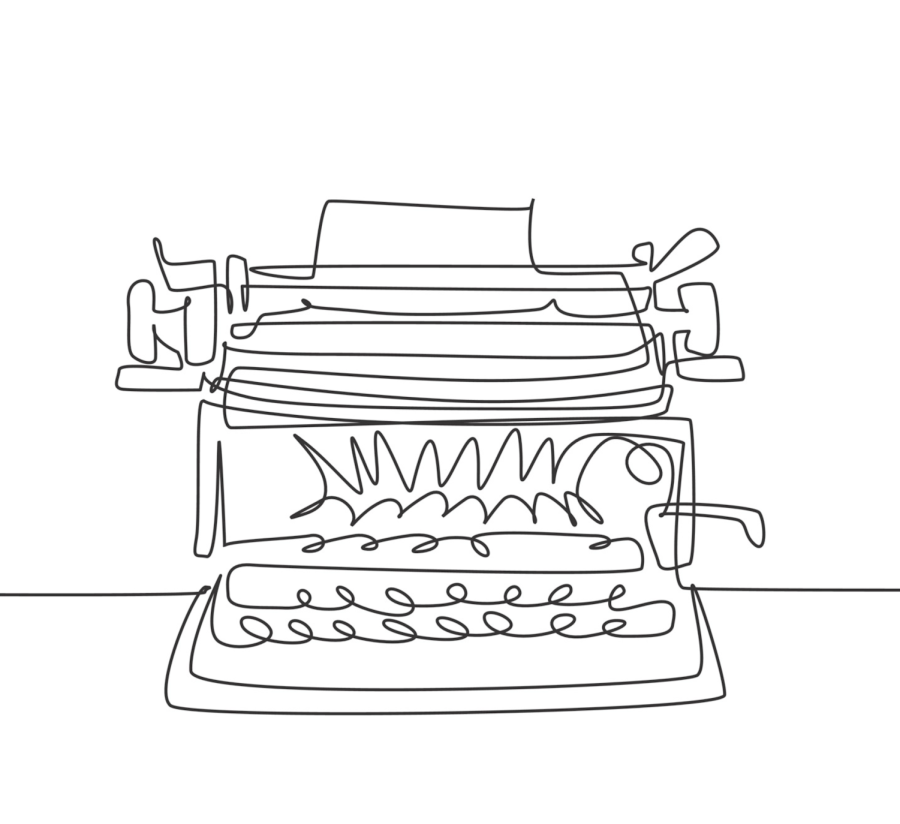The Typewriter Renaissance is Upon Us
All faculty rightfully prefer that students forsake using all technology in their classes. Technologies that have internet access, like computers or cell phones, lure students into a distracted purgatory of Washington Post crosswords, doom scrolling on Twitter, and aimless window shopping for used clothes online. Who can stay focused on an 80-minute Tuesday and Thursday lecture when they could gaze longingly at vintage dresses instead?
Now more than ever, there are plenty of reasons for faculty to be skeptical over the usage of technology in their classrooms. The introduction of AI capable of creating texts similar to what a human could write opens up an entirely new can of worms. Clearly, we need a solution to this problem.
I see one very obvious option that we should encourage students to use — and no, it’s not taking notes with a pen or pencil on paper like a bunch of luddites. If the modern laptop is viewed as far too distracting for the classroom due to its ability to access the internet, we should return to the roots of technology in academia: the humble manual typewriter. Typewriters allow their users to have all of the speed and convenience of a keyboard without any of the distractions of electronics.
Notoriously quiet devices, typewriters would not be distracting to other students. In fact, they would likely contribute to a positive and productive classroom environment by providing a small amount of background noise, similar to the effect of a white noise machine that many students use to help them sleep at night. In that sense, the calming clickety-clack of several typewriters could help students prioritize what’s most important in long lectures: a good afternoon’s sleep.
It really is such a shame that this humble technology has fallen out of favor, not only amongst academics, but also in the general canon of 21st-century life. Newsrooms used to have such a vibrance to them, as dozens of journalists, writers, and typists all hammered away at their work, the combined tapping of typewriter keys almost morphing into a comforting background hum. One may argue that the machine is archaic and that we should be grateful to modern computers for “making writing and researching much smoother,” but even skeptics have to agree: modern equipment doesn’t carry the same weight as an old-fashioned typewriter.
Speaking of weight, typewriters are also famously portable. The average typewriter weighs around 25 pounds, meaning that they can be placed into their handy protective cases and easily ferried all around campus. One of the Review’s production editors has even traveled on a plane with one! If they can haul a typewriter through the Denver airport and onto a plane, then it is completely possible to navigate the crowded hallways of the King Building with one. Think about it this way: 25 pounds is two or three cats, depending on their size, and who wouldn’t want to carry around a few cats everywhere they go? And consider — how buff will you be after a few weeks of hauling a typewriter around everywhere you go?
It’s clear that the needs of the modern classroom far surpass the capabilities of the technology we currently have, and we are in desperate need of a solution. In this moment of great need, turning to the pinnacle of form and function — the typewriter — just might be the answer to our problems. There is a reason for the saying “reject modernity, embrace tradition,” after all.




